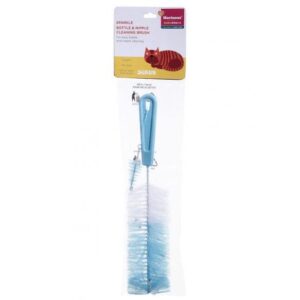FEEDING BOTTLE
FEEDING BOTTLE: Feeding Bottle is not a drug, but rather a device commonly used for feeding infants and young children. It is a container designed to hold liquid, usually milk or formula, and has a nipple or teat attachment for the child to suck on.
While a feeding bottle itself does not have a specific mechanism of action, its use allows parents or caregivers to provide nutrition to infants who are unable or not yet ready to breastfeed. Feeding bottles are also used to administer medication or supplements to infants.
The dose of the feeding bottle depends on the age and needs of the child. For infants, it is important to follow recommended guidelines for the amount and frequency of formula or breast milk to be given. As the child grows older, the amount and type of liquid in the bottle may change to accommodate their nutritional requirements.
Side effects of using a feeding bottle are generally limited to issues such as nipple confusion, gas, colic, or an incorrect latch. Nipple confusion can occur when a breastfed baby switches between breastfeeding and bottle feeding, leading to difficulties in breastfeeding. Gas and colic may also be more commonly associated with bottle feeding due to the introduction of air while sucking on the bottle. However, proper bottle sterilization and choosing the correct nipple flow rate can help minimize these side effects.
It is important to seek guidance from pediatricians or healthcare professionals for proper usage and to address any concerns related to feeding bottles or infant nutrition.

